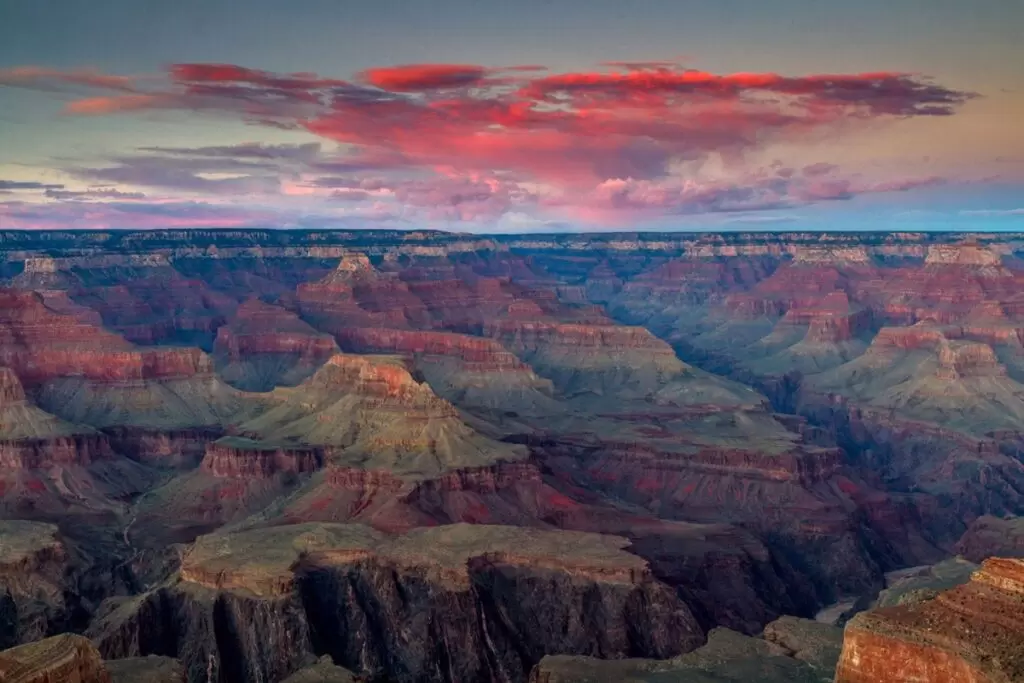For more than a century, tourists from all over the world have visited the Grand Canyon to experience its awe-inspiring vistas. First protected in 1893 as a reserve and later as a national monument, it wasn’t until February 26, 1919, that the Grand Canyon became a national park. As we celebrate nearly 100 years of protecting this special place, check out 13 great facts about this Arizona icon.
1. The Grand Canyon is bigger than the state of Rhode Island. The Grand Canyon is a mile deep, 277 miles long and 18 miles wide. While the park doesn’t include the entire canyon, it does measure in at a whopping 1,904 square miles in total. In comparison, Rhode Island is around 1,212 square miles.
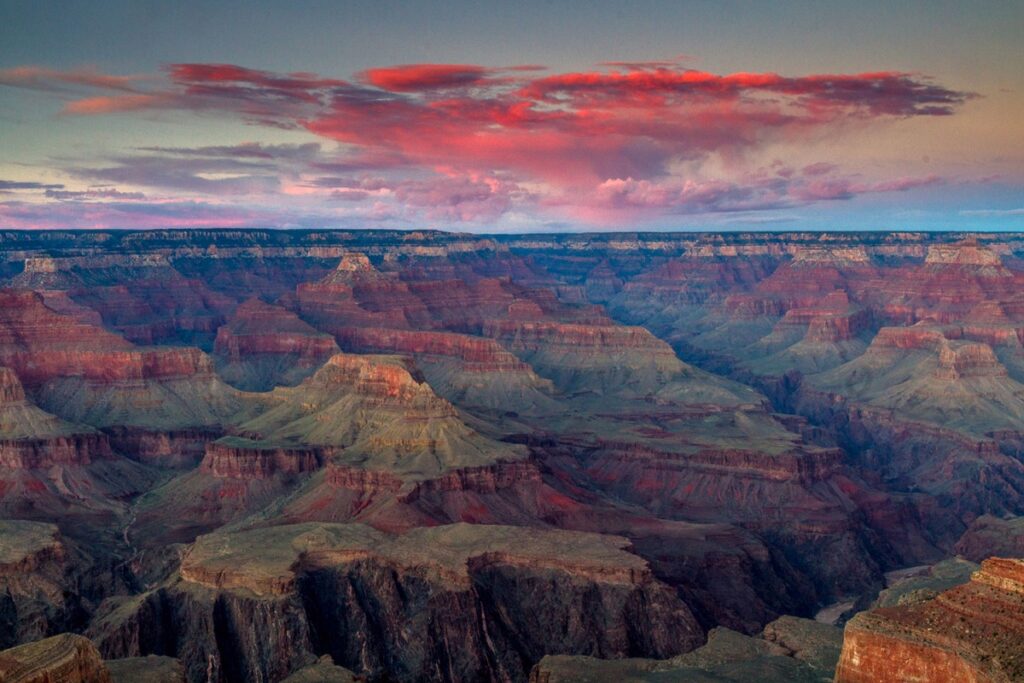
2. The Grand Canyon itself can influence the weather. The Grand Canyon has an elevation spanning from around 2,000 feet to over 8,000 feet, allowing it to experience a variety of weather conditions. As a result, the temperature generally increases by 5.5 degrees with each 1,000-feet loss in elevation.
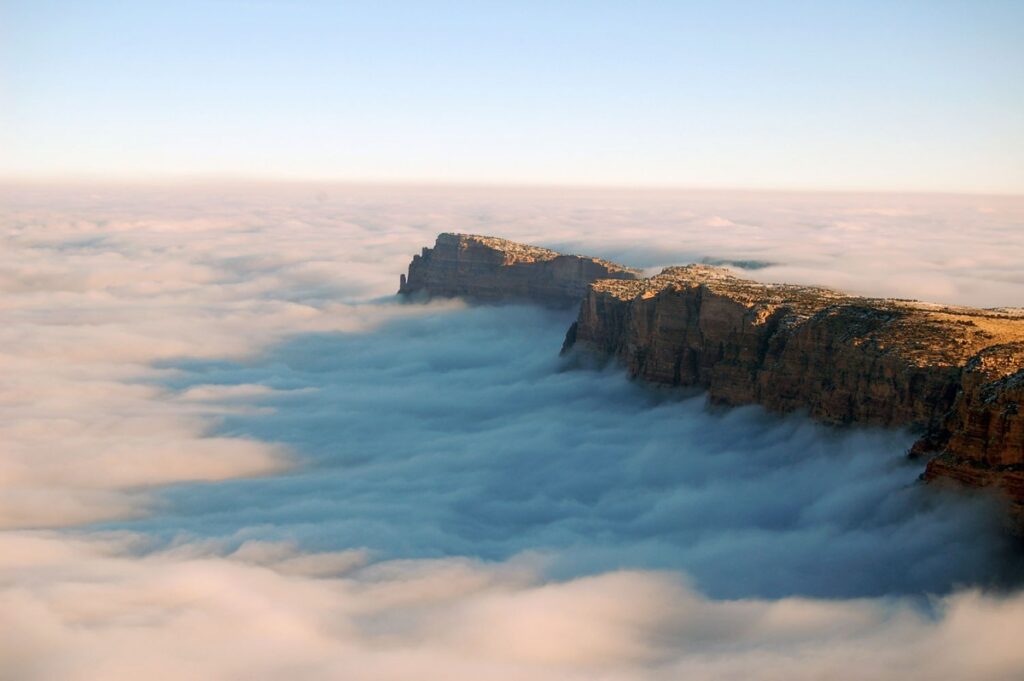
3. Hidden caves abound in the canyon. Tucked within the Grand Canyon are an estimated 1,000 caves, and of those, 335 have been recorded. Even fewer have been mapped or inventoried. Today, only one cave is open to the public — the Cave of the Domes on Horseshoe Mesa.

4. The Grand Canyon is one of the most visited national parks in the United States. An estimated 5.9 million people visit the Grand Canyon a year, making it the second most popular national park following just behind the Great Smoky Mountains of North Carolina and Tennessee. It’s a far cry from the annual visitation of 44,173 in 1919 when the park was created.
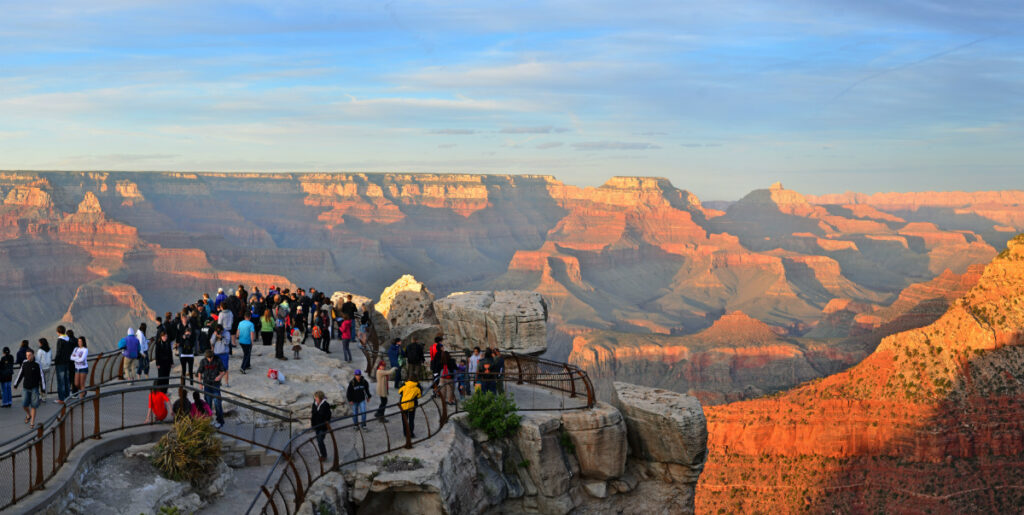
5. The Grand Canyon was carved over some 6 million years. Geological activity and erosion by the Colorado River created the Grand Canyon as we know it today. It is one of the most studied landscapes in the world, with extensive fossil records, a multitude of geologic features and rich archeological history. Learn more about the history of the Grand Canyon.
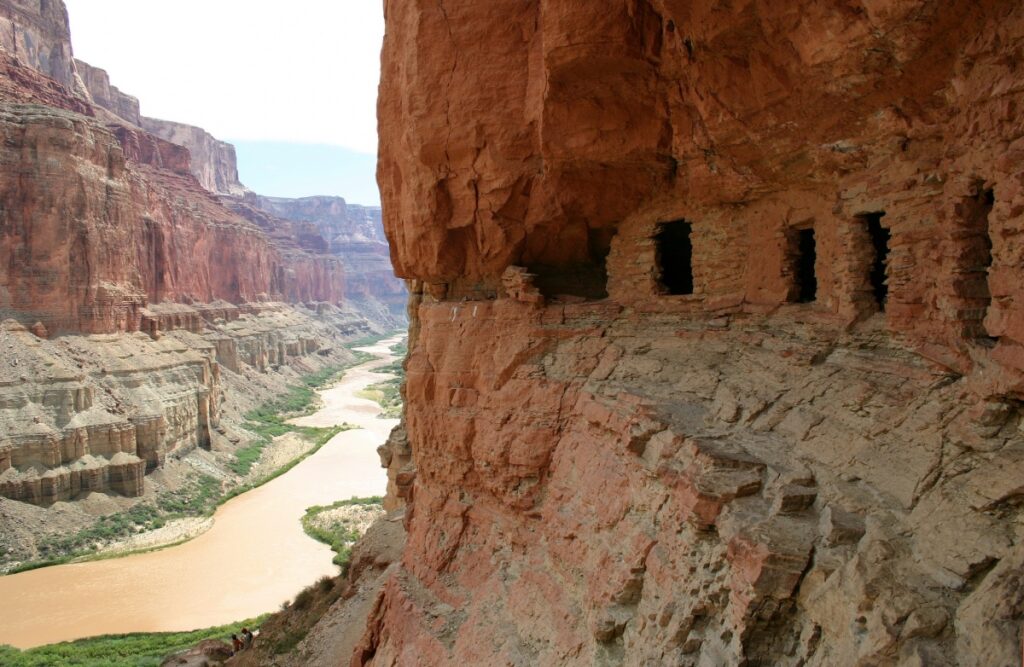
6. The most dangerous animal in the park is the rock squirrel. From bighorn sheep and the California Condors to the Gila monster, the Grand Canyon is home to a large array of wildlife. But it’s the rock squirrel that causes the most trouble. Every year, dozens of visitors are bitten when they try to feed these animals. To stay safe, do not approach or feed any animals found at Grand Canyon (or any park). Learn more about keeping wildlife wild.
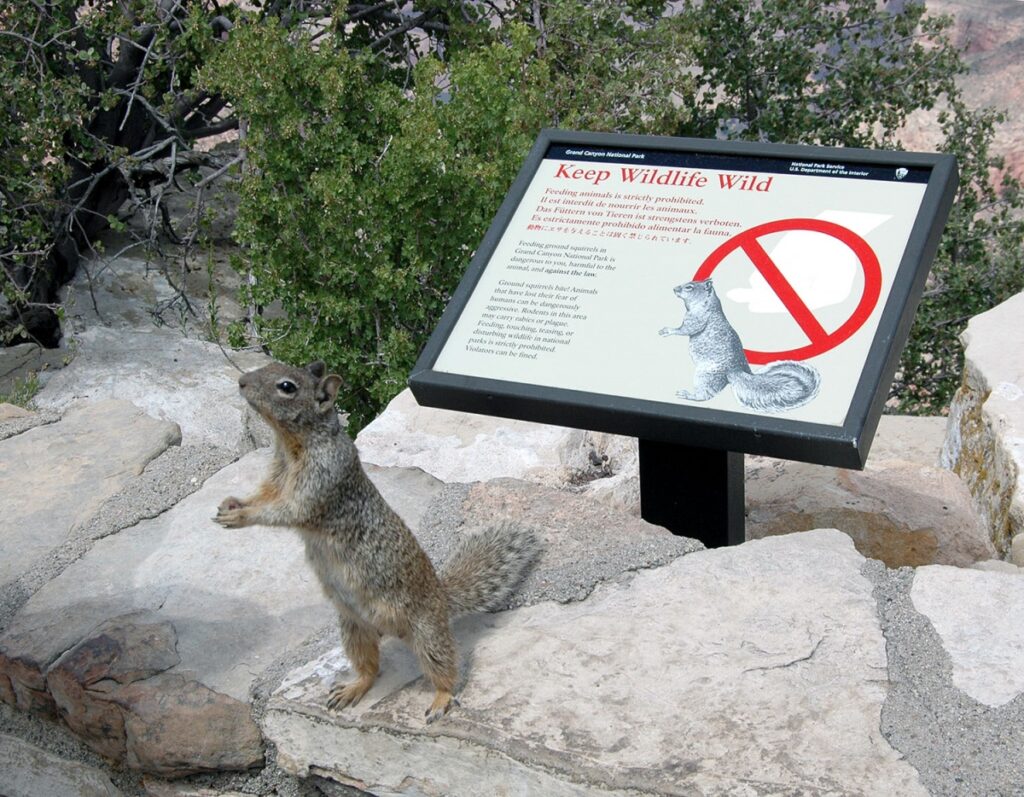
7. Visiting the North Rim and South Rim in the same day may be harder than you think. As the crow flies, Grand Canyon Village on the South Rim and the lodge on the North Rim are only about 10 miles apart. However, to drive between them through the park, over the Colorado River and loop around the canyon, you have to travel 215 miles or about 5 hours. That’s just one small way to understand the immensity of this incredible place.
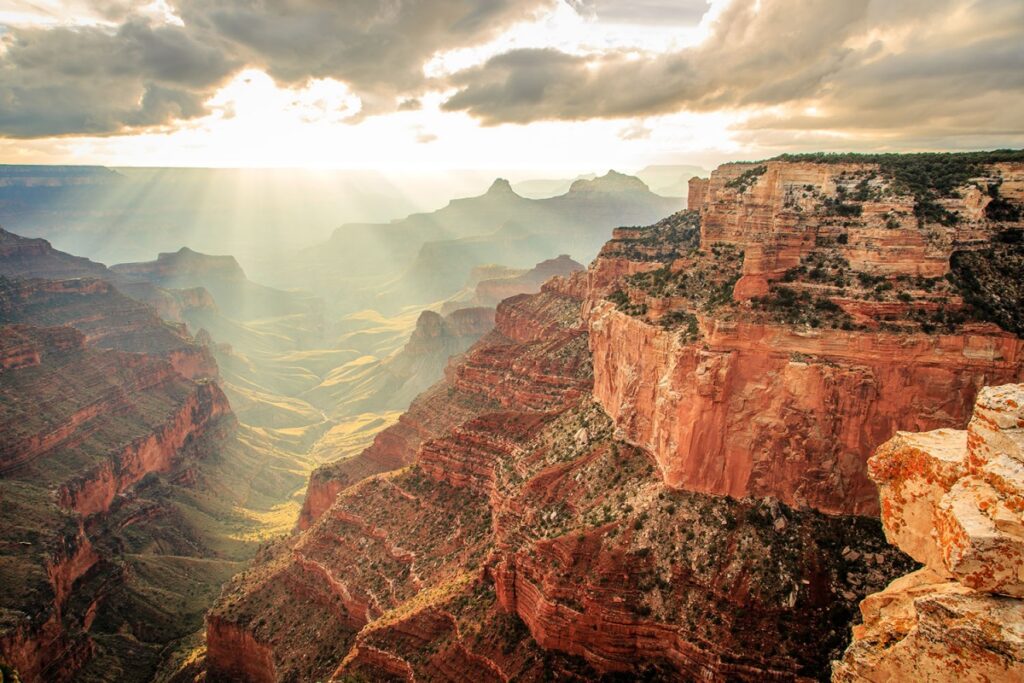
8. You can get an aerial view of the Grand Canyon without ever leaving the ground. The Skywalk, managed by the Hualapai Tribe and located on tribal lands, consists of a horseshoe shaped steel frame with glass floor and sides that projects about 70 feet from the canyon rim. It is the most famous attraction at Grand Canyon West.

9. Souvenirs may be bought but not taken. Grand Canyon National Park — a World Heritage Site — belongs to everyone. Rocks, plants, wood and artifacts must be left where you found them so others can enjoy them in the future. Learn more about Leave No Trace.
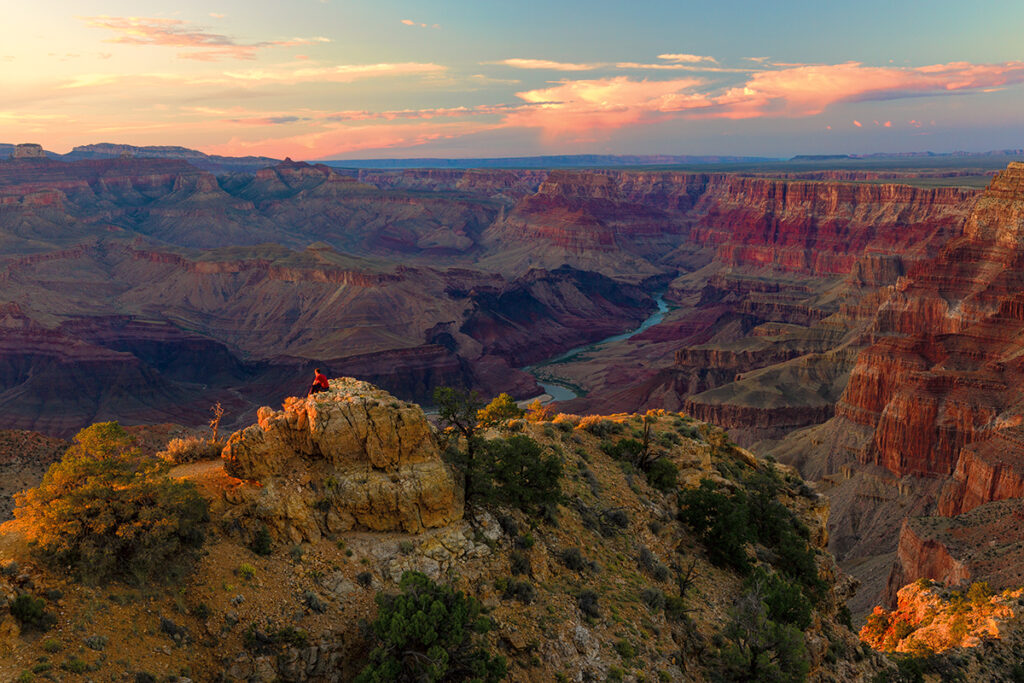
10. Controlled fires are good for the canyon’s landscape. Fire has been a part of the Colorado Plateau ecosystem for thousands of years. It naturally thins the forest, recycles nutrients into the soil and stimulates new plant growth. Fire managers at Grand Canyon National Park work to strike a balance between restoring and maintaining natural processes associated with fire, and protecting human life and property.
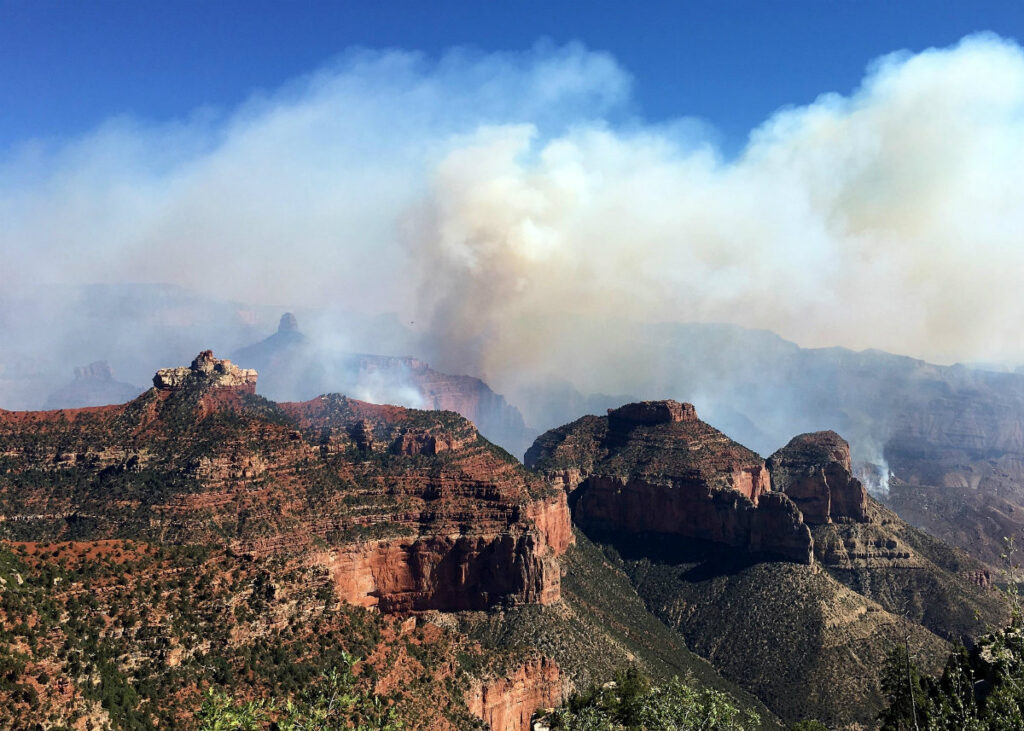
11. Want to have the canyon to yourself? Head to Tuweep. A visit to Tuweep (also spelled Toroweap) Overlook offers a chance for an uncrowded, rustic and dramatic experience at the Grand Canyon. Here a 3,000-foot sheer drop provides stunning views of the North Rim of the canyon and the Colorado River. But be warned — the area can only be reached by negotiating difficult roads with a high-clearance vehicle.
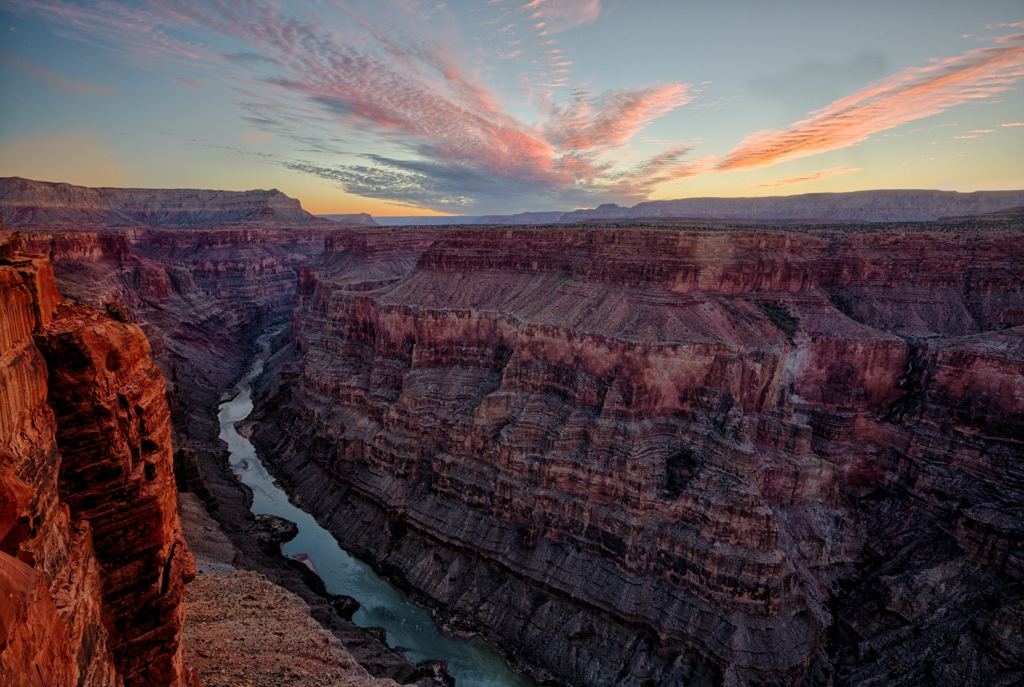
12. Hit the trail for some of the best views in the country. Mule trips, rafting the Colorado River and stargazing — there is so much to do at the Grand Canyon. If you can only do one thing: Take a hike. Whether it’s long or short, all trails come an exceptional view.

13. Teddy Roosevelt was instrumental in protecting the Grand Canyon. President Theodore Roosevelt first visited the Grand Canyon in 1903 and was deeply moved by the unique landscape. In 1906, Roosevelt signed a bill that proclaimed the area the Grand Canyon Game Reserve, and two years later, he made it a national monument. Of the Grand Canyon, he said, “Leave it as it is. You cannot improve on it. The ages have been at work on it, and man can only mar it.”
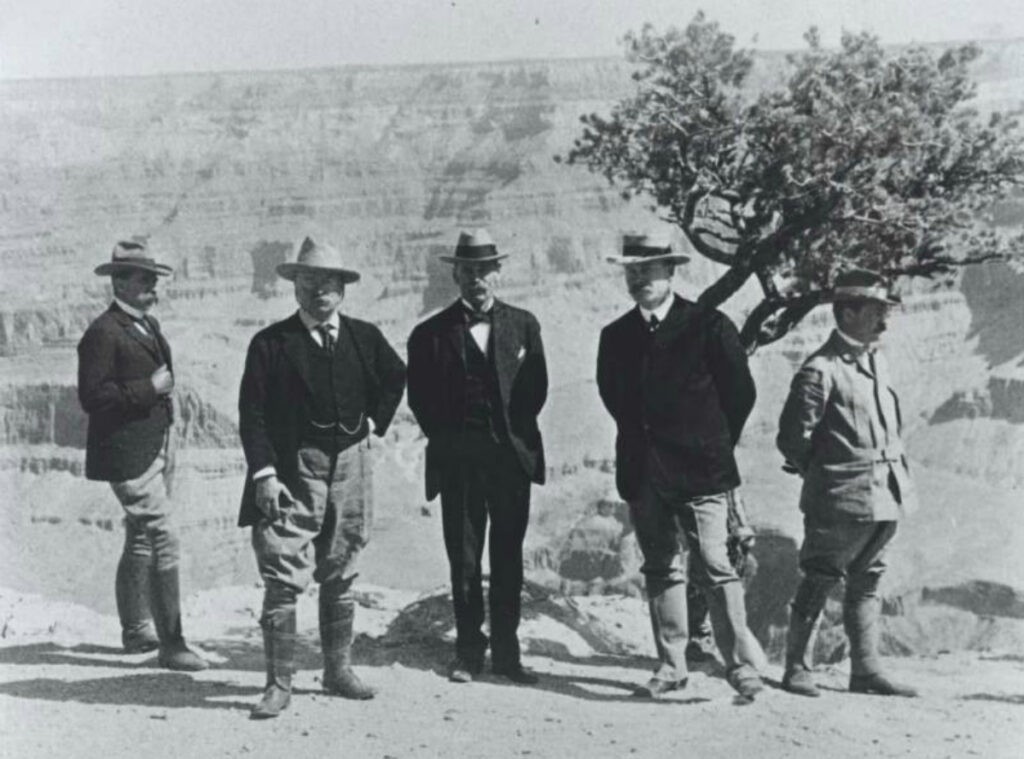
Now the real question is, when will you explore the Grand Canyon?

